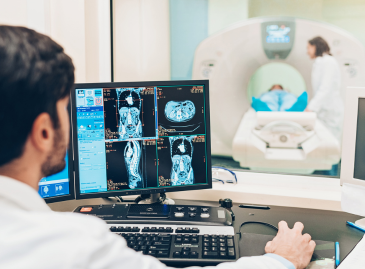Bunion Surgery in Turkey
Bunion surgery treats the painful bony bump at the base of the big toe by correcting the deformity and relieving discomfort. When the foot's bones move out of alignment, the big toe leans inward, resulting in this condition. This misalignment causes soreness, swelling, and walking difficulties over time. For many people, non-surgical treatments like wearing wider shoes, using orthotics, or applying ice can help relieve symptoms. However, when the pain becomes severe and affects daily life, bunion surgery may be the best option.
We are with you throughout the entire process
You will find some useful information that will help you prepare the necessary organization to prevent all problems and make the necessary arrangements to ensure that everything goes smoothly during your stay in Turkey.
After our with doctor answers all your questions, doctor will explain to you how the operation process will proceed.
You will have a preliminary meeting with the doctor and team we work with before the operation.
Read the document we sent you before coming to Istanbul and be sure to follow the rules.
During the recovery process, our teams will call you, ask about your condition and ask for photos.

FAQ for Bunion Surgery
You will find detailed information about the operation and organization you will need before coming to Turkey. You can contact your sales representative for any further questions.
- Bunion surgery is a procedure to fix a bunion, a bony lump at the big toe's base, by realigning the bones and relieving pain.
- Surgery is needed when a bunion causes persistent pain, difficulty walking, or when non-surgical treatments no longer provide relief.
- Some swelling and discomfort are to be expected, but with proper care, pain decreases over time. Most people return to normal activities in a few months.
- The procedure usually takes an hour to two hours, depending on the complexity of the case.
- The cost varies based on the type of procedure, surgeon’s experience, and hospital facilities. Turkey offers affordable bunion surgery with high-quality care.
Authorized by the Ministry of Health and Tourism in Turkey
Who Needs Bunion Surgery?
Not everyone with a bunion requires surgery. It is typically recommended when:
- The bunion causes persistent pain even when resting
- Walking or wearing normal shoes becomes difficult
- The big toe overlaps other toes, leading to further complications
- Non-surgical treatments no longer provide relief
If you are unsure whether you need bunion surgery, consulting a specialist is the best way to determine the right course of action.
Types of Bunion Surgery
Depending on how severe the condition is, several surgical methods are employed to treat bunions:
- Osteotomy
A procedure where the surgeon cuts and realigns the bones to restore the normal shape of the foot.
- Exostectomy
In this case, the bony hump is removed without realigning the bones. It is used mostly for mild cases and is less common.
- Arthrodesis
In severe cases, where arthritis is also present, for pain relief and to prevent more deformity, the joint may be fused.
- The surgeon's recommendation and the patient's condition determine the procedure to be employed.
The Bunion Surgery Process
Before Surgery
- The doctor evaluates the severity of the bunion through physical examination and X-rays.
- Patients are advised to stop smoking and adjust medications if needed.
During Surgery
- The procedure typically takes 45 minutes to 2 hours, depending on the complexity.
- Local or general anesthesia is used.
- The surgeon makes small incisions, corrects the bone alignment, and secures the bones with screws or plates if needed.
After Surgery
- Patients can often go home the same day.
- The foot is bandaged, and crutches or a special shoe may be required for support.
Recovery After Bunion Surgery
Initial healing can take 6 to 12 weeks, and full recovery can take up to 6 months, though recovery times can vary.
Post-Surgery Care
- Keep the foot elevated to reduce swelling.
- For some weeks, refrain from placing weight on the foot.
- Follow-up visits are necessary to monitor healing.
- Gradually return to normal activities under medical guidance.
Following a proper recovery plan is essential for successful results.
Risks and Potential Complications
Although bunion surgery is usually safe, there are a few risks, including:
- Swelling and discomfort
- Infection
- Stiffness or reduced flexibility in the big toe
- The possibility of the bunion returning
Choosing an experienced surgeon minimizes these risks.
Bunion Surgery Cost in Turkey
The cost of bunion surgery varies based on factors such as:
- The type of procedure
- The surgeon’s experience
- The hospital or clinic’s facilities
Turkey offers high-quality medical care at affordable prices, making it a preferred destination for medical travelers. Compared to several countries in the west, the cost in Turkey is significantly lower, without compromising on quality.
Why Choose Istanbul Med Assist for Bunion Surgery?
Istanbul Med Assist is a trusted healthcare provider offering bunion surgery in Turkey with experienced orthopedic surgeons and modern medical facilities.
Why Choose Us?
Choose us for expert orthopedic surgeons, advanced clinics, affordable care, and full support, including medical tourism assistance. With Istanbul Med Assist, enjoy top-quality treatment while exploring Turkey’s culture and beauty.
Conclusion
Bunion surgery is an effective solution for those suffering from persistent pain and difficulty walking. The most effective course of action, given the variety of surgical treatments available, depends on the severity of the problem. Although recovery takes time, patients can resume their regular activities with proper treatment.







